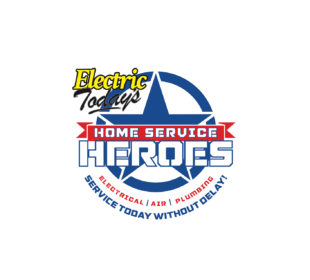Does your Tampa Bay home have the requisite number of smoke and CO detectors? Have they been tested for efficiency in the last year? The fall is the best time for area homeowners to be reviewing their smoke and CO detectors. Residential fires and carbon monoxide leaks peak during the winter when people are gathered in homes to celebrate the holidays. Common causes for these fires include burning candles, smoking, lighting and electrical shorts, Christmas trees, and lightning. Even in Florida, CO deaths spike in the winter when the temperatures cool down a bit and people congregate in homes during extended vacations. It’s important to have smoke and CO detectors in place to ensure safety throughout the year.
Home Service Heroes, a big proponent of home safety has put together an essential list for the proper placement and maintenance of detectors.
Smoke Detectors
- Only purchase smoke alarms that carry the label of a recognized testing laboratory such as Underwriter Laboratories or Intertek/ETL (two of the largest companies).
- According to the National Fire Protection Association (NFPA), smoke detectors should be installed on every level of the home – including the basement.
- Smoke detectors should be installed inside every bedroom and just outside every bedroom door. This includes any guest rooms and rooms where people might sleep.
- Install smoke detectors at least 10 feet away from the kitchen (and any cooking/heating appliances that could generate smoke). This will help minimize false alarms when something in the kitchen starts to smoke.
- If there are levels without bedrooms, install detectors in the living room (or the family or entertainment room) or near the stairway leading to the upper level.
- Always install smoke detectors on ceilings or on walls near the ceiling where smoke rises. Wall-mounted units should be positioned a foot or less from the ceiling.
- Keep smoke detectors away from doors, windows, air ducts, and any areas where there might be a draft. A draft can interfere with the efficiency of a detector.
- Never paint or decorate detectors as this might interfere with the operation.
- There are two types of smoke detectors on the market: ionization and photoelectric. Ionization units can detect small amounts of smoke created by fires that flame quickly. Photoelectric units help detect fires in their early stages; smoldering smoke infiltrates a space before the source becomes a fire.
- Convenient dual sensor detectors feature both technologies (ionization and photoelectric) in one unit for protection against most types of fires.
- All detectors should be tested monthly to ensure the batteries are secure and fully charged. Batteries should also be changed every year.
CO Detectors
- Sources of carbon monoxide include gas water heaters, gasoline, and diesel-powered generators, boat engines, kerosene space heaters, generators, and car exhaust.
- Similar to smoke detectors, CO detectors should also be installed on every floor of the home. However, unless your basement or attic contains a combustion appliance, there’s no reason for a CO detector in those spaces.
- Install one carbon monoxide detector within 15 feet of each bedroom door.
- If you have an enclosed garage attached to the home, install a detector within 10 feet of the connecting door.
- Keep CO detectors from fuel-burning appliances, as they give off a small amount of carbon monoxide when they start.
- Install CO detectors at least a couple of feet below the height of the ceiling. Carbon monoxide will float toward the ceiling because it is lighter than air. However, if it is the result of a heat source not burning correctly – the warm air can form a layer near the ceiling that will keep the CO from reaching the top.
- CO detectors should be kept away from direct sunlight and anywhere they might be in the direct line of cool air such as AC vents or ceiling fans. Both extremes can affect the efficiency of a CO unit.
- Battery-operated CO units need their batteries changed more frequently than smoke detectors. Check the batteries once a month and change them out if there is anything irregular about the operation.
- A carbon monoxide detector does not double as a smoke detector. This is a common mistake made by many homeowners. There are dual CO/Smoke detector designs on the market with a cost comparable to buying each separately.
- According to the NFPA, interconnected detectors (of both designs) are “more likely” to operate efficiently and alert the occupants. These systems are more expensive and might require the assistance of an electrician for proper installation.
Help keep your home and household safe throughout the year with the proper placement and maintenance of smoke and CO detectors. Remember that the licensed electricians at Home Service Heroes are experts on detectors and can help with all your installation and maintenance needs. If you require assistance with your smoke and CO detectors, don’t hesitate to contact us. Give us a call at (813) 696-3398 to schedule an assessment today!
